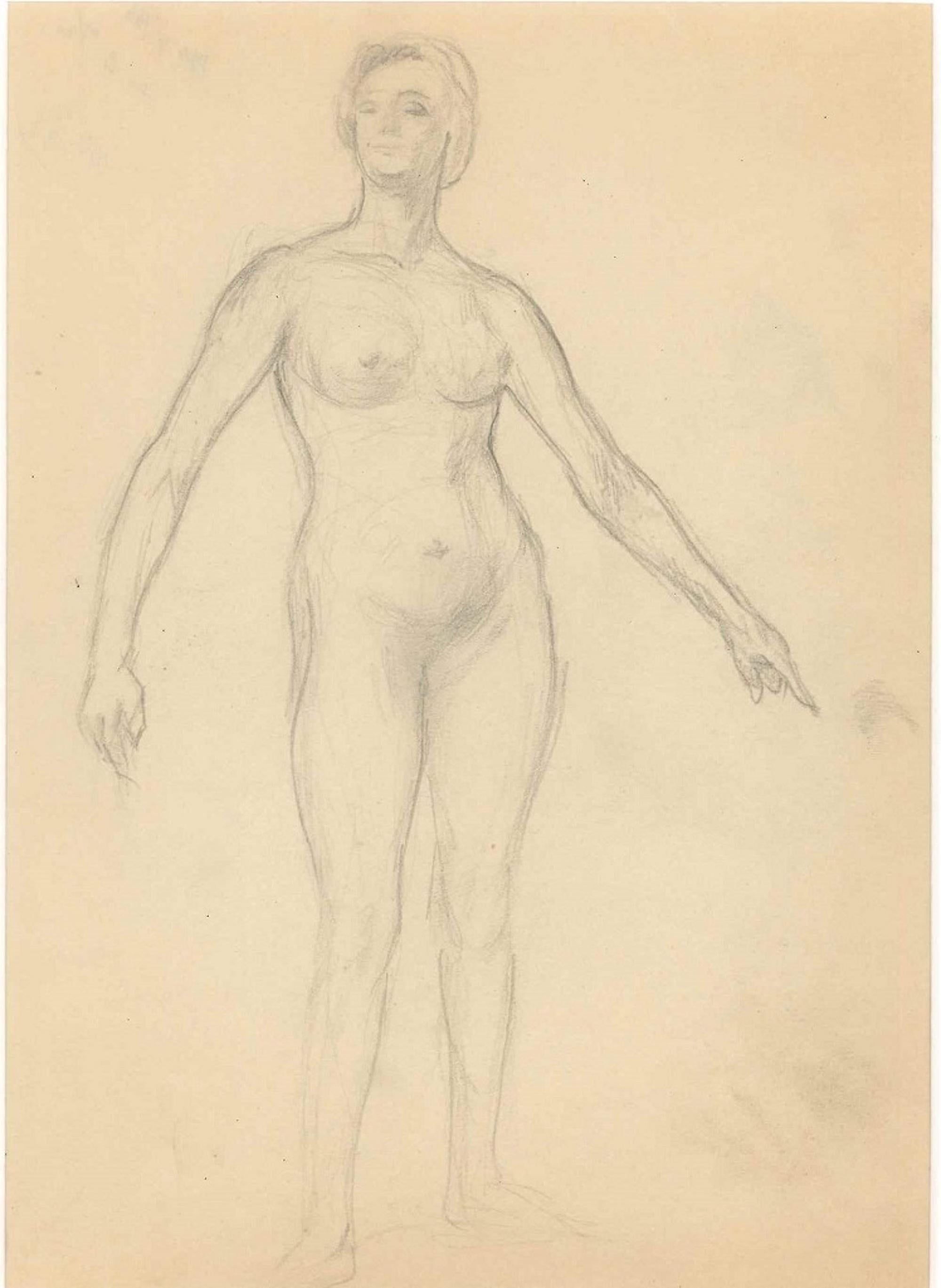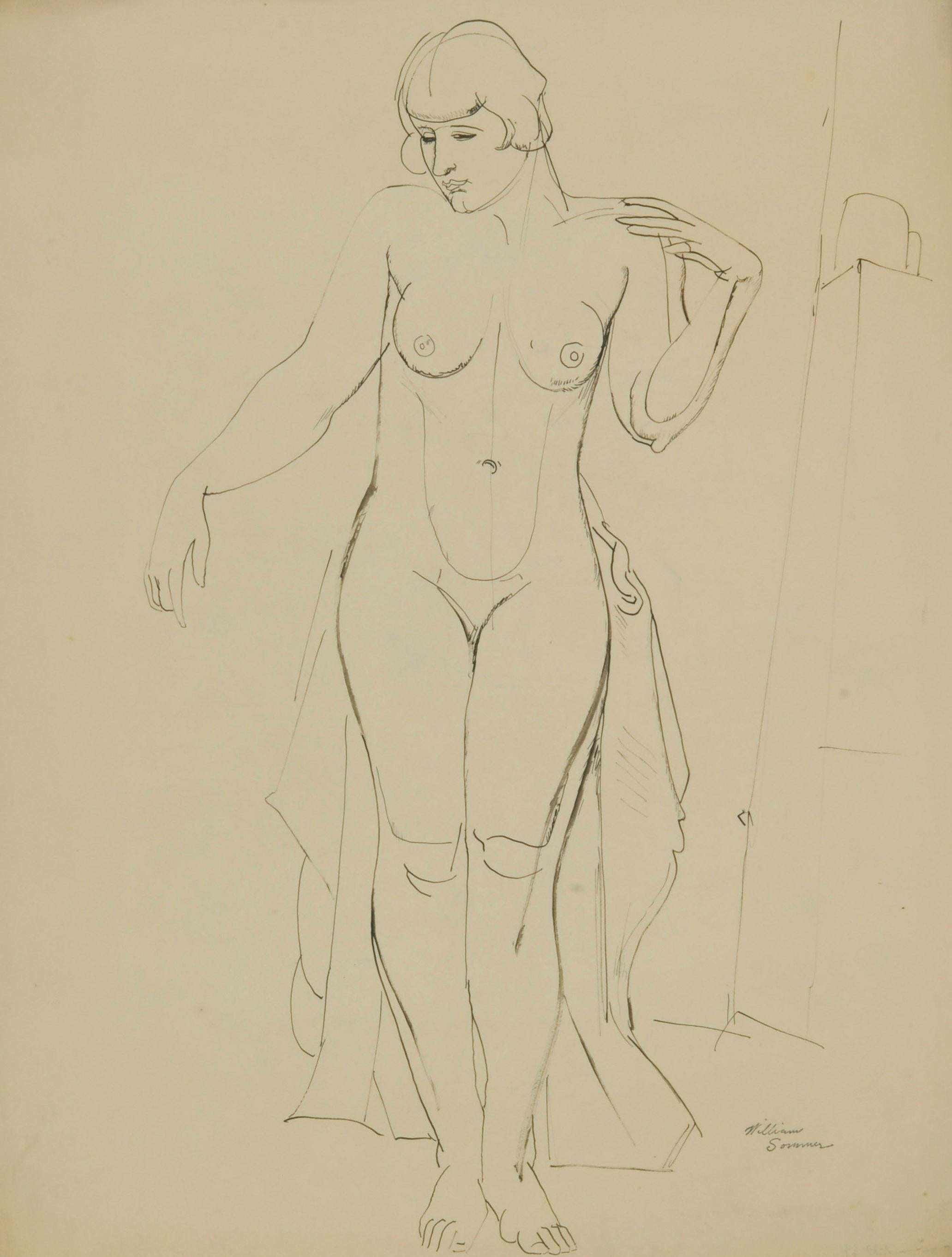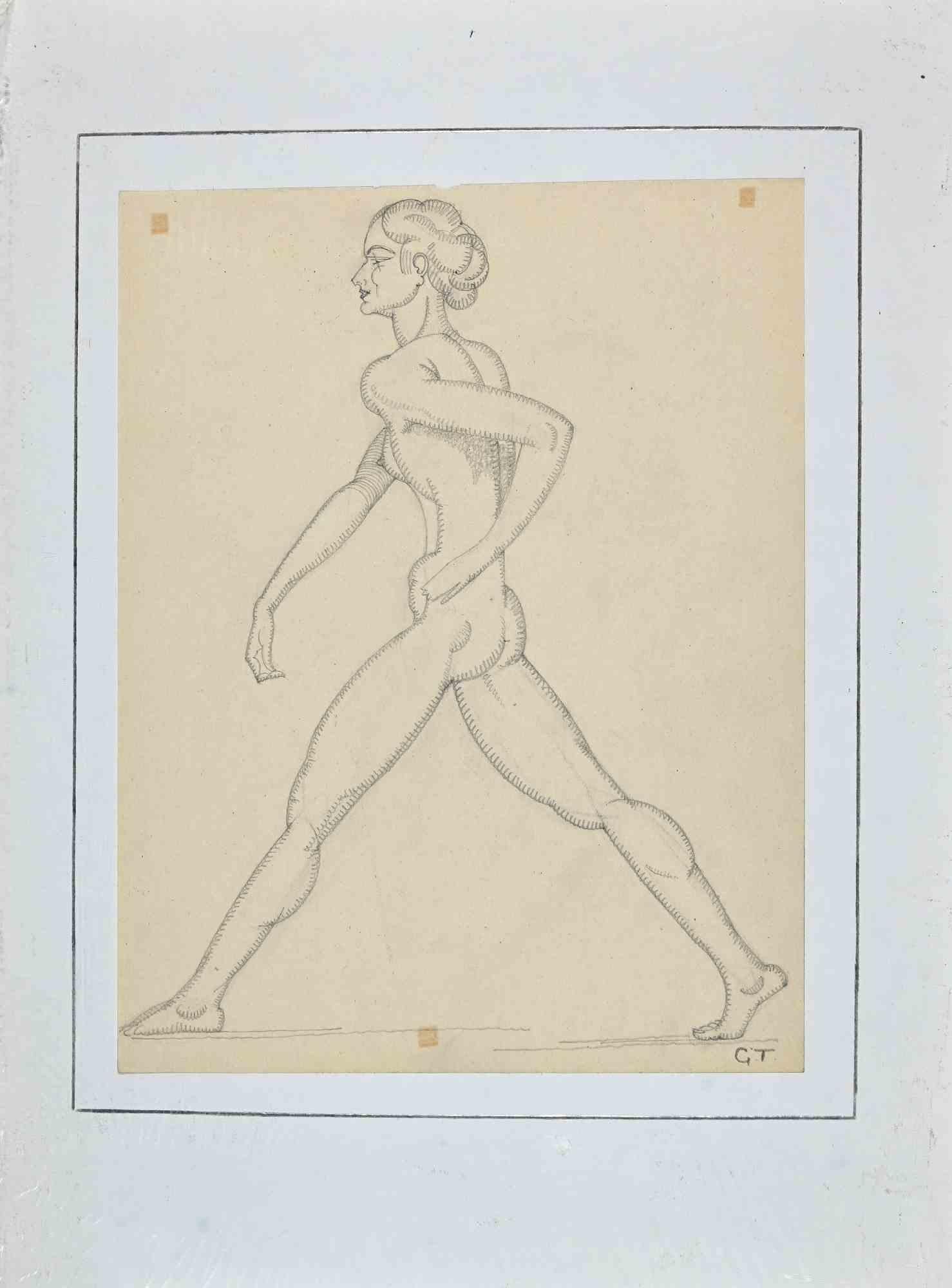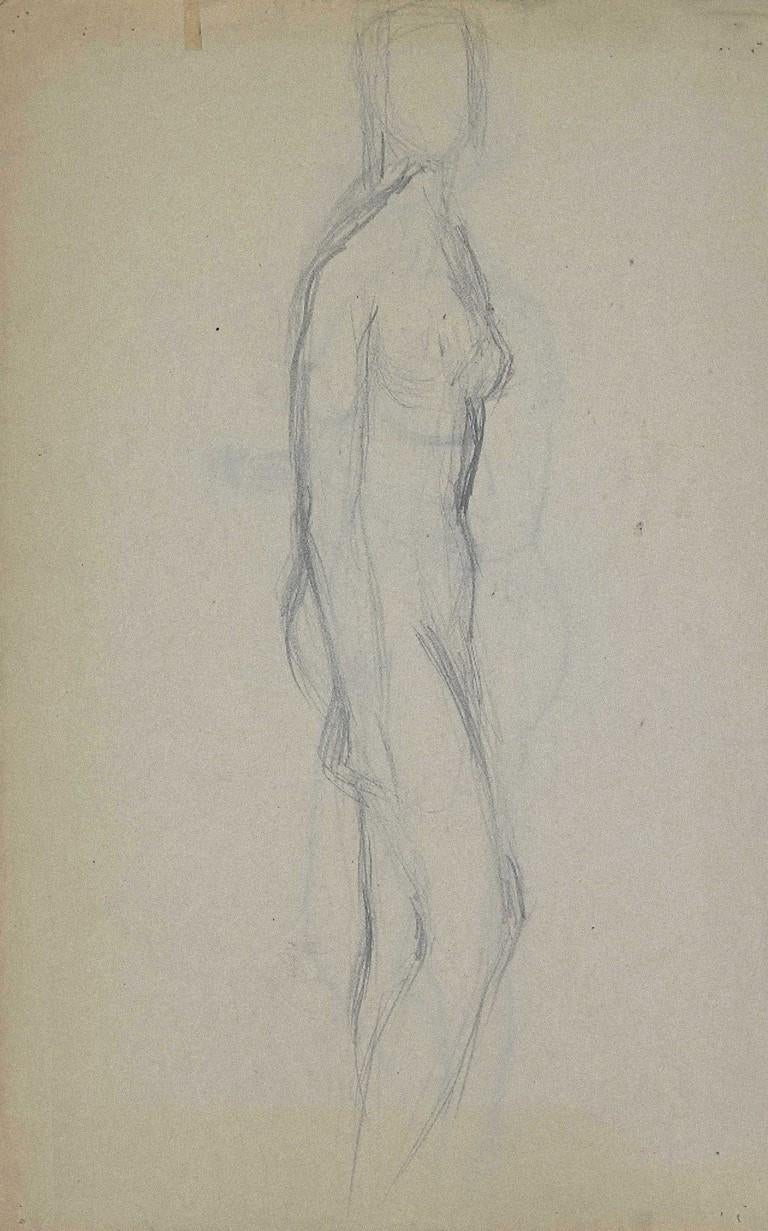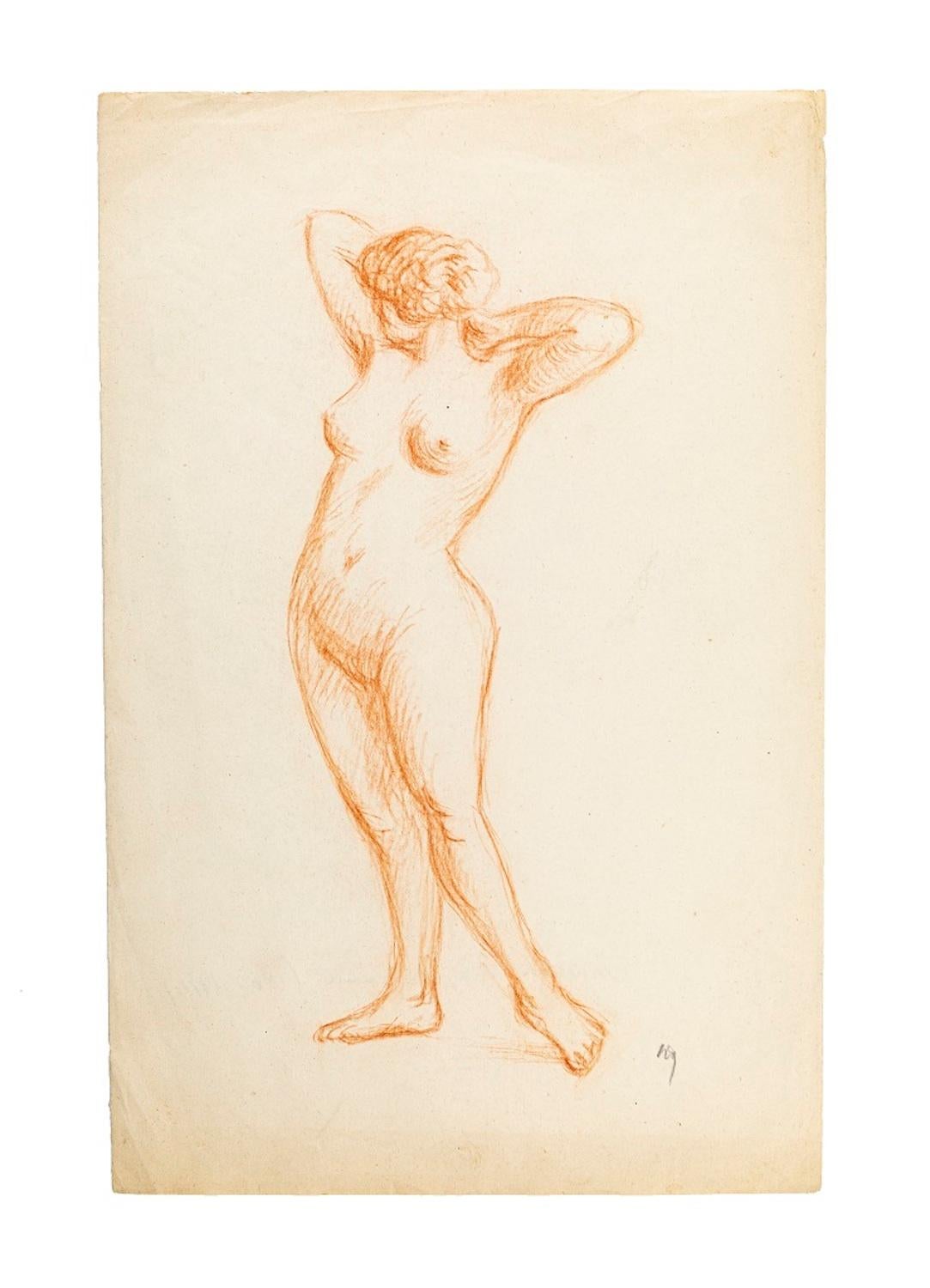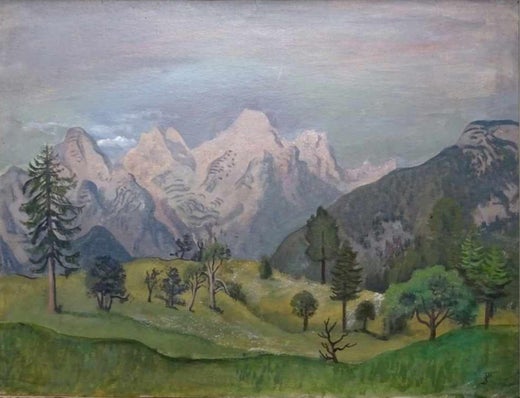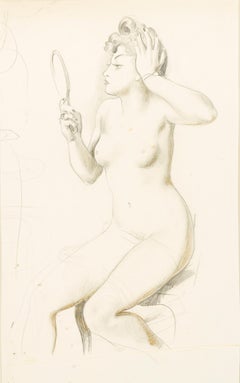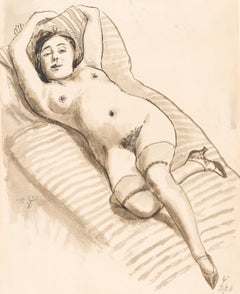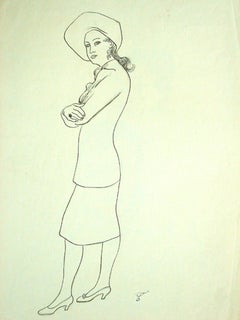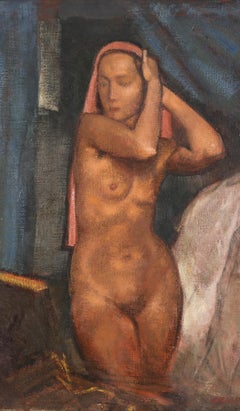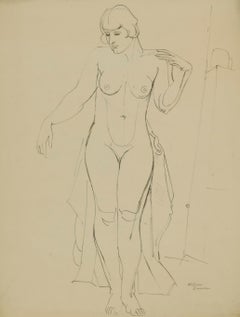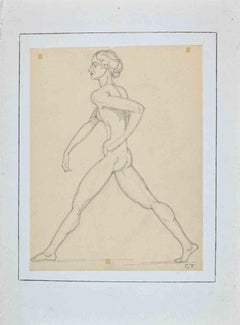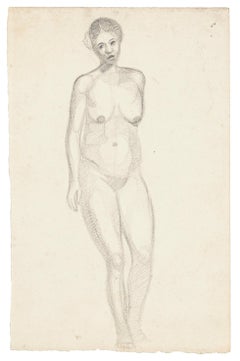Items Similar to Stehender Akt / Standing Nude
Want more images or videos?
Request additional images or videos from the seller
1 of 5
August Wilhelm DresslerStehender Akt / Standing Nude
$1,036.58
£785.23
€890
CA$1,436.04
A$1,610.61
CHF 843.45
MX$19,570.48
NOK 10,710.42
SEK 10,154.23
DKK 6,776.25
About the Item
August Dressler is one of the painters of the New Objectivity. He is one of the lesser-known artists of the Weimar era, but he too, like his famous contemporaries Georg Grosz, John Heartfield, and Otto Dix, was committed to social and political issues.
The Berliner-of-choice defied stubbornly the summary classification. Dressler acted truthfully to his origin, temperament and insight as an individual who presents his bond as obligation, who takes his program as template and his slogan as abomination. Only few painters of his generation restrain so inconspicuously from the revolutionary storm and new trends that found its most effective expression in Expressionism of ” the Bridge” group and in the mystical works of the ‘Blue Rider’. Dressler’s self-imposed isolation is based neither on his capriciousness nor is it intentional – it is simply one of the inner necessities of his artistic existence.
One does not do justice to his work, if one tries to interpret only the visible facts, the artistic or the technical qualities in Dressler’s works. This painter lived his destiny with a stubbornly determined consequence of his fate: the pictures are nothing else than the graphic metaphors of the ‘introverted gaze’. He experienced grief and loneliness already during his youth. Dressler learns early about the shadow side of human existence – it becomes the basis of the way he perceived the world. ” I cannot separate myself from what has established me ” – there was a very immediate connection and solidarity between the painter and his personal experiences (l’art pour l’art attitude). Thus Dressler identifies himself with those embodiments of petty-bourgeois narrowness, with those disappointed and abandoned, with those who appreciate simple joys of life and those with quiet hopes.
In his works the figurative language wins through its ability to depict and objectify feelings without words. Dressler does not paint to be modern or original. His way of perception is essential in a solid sense; he focuses on things, elements, and events that reflect a piece of life.
The closeness to the object and the attachment to the figure remain unchanged in Dressler’s oeuvre. One is tempted, looking at his works of five decades, to speak rather than about development but more of unfolding. The thematic inventory is from the beginning artist’s credo and basic motive: the form is added as the answer of the painter. It is Dressler’s personal preference not to correct reality nor to imitate it – his realism brings form and content, sensation and insight to life in a forceless manner.
Dressler feels, thinks and arguments his works on a more general level; his work is not an illustration of social misery or individual depravity. This “realist of the sharper tone” painterly transcends the limitations of genre and folklore; his “petty-bourgeois everyday life” is neither enclosed in the poor man’s pathos nor in the oh-human ecstasy. “Who controls the keyboard of nature”, proclaims Dressler, “can play in their own ways”.
Source: Delp’sche Verlagsbuchhandlung München (Ed.), August Willhelm Dressler, Munich 1970.
- Creator:August Wilhelm Dressler (1886 - 1970, German)
- Dimensions:Height: 10.44 in (26.5 cm)Width: 14.38 in (36.5 cm)
- Medium:
- Movement & Style:
- Period:
- Framing:Framing Options Available
- Condition:
- Gallery Location:Wien, AT
- Reference Number:1stDibs: LU1782212787832
August Wilhelm Dressler
Wilhelm August Dressler is one of the painters of the New Objectivity (...) and was committed to social and political issues. The Berliner-of-choice defied stubbornly the summary classification. Dressler acted truthfully to his origin, temperament and insight as an individual who presents his bond as obligation, who takes his program as template and his slogan as abomination. Only few painters of his generation restrain so inconspicuously from the revolutionary storm and new trends that found its most effective expression in Expressionism of ” the Bridge” group and in the mystical works of the ‘Blue Rider’. Dressler’s self-imposed isolation is based neither on his capriciousness nor is it intentional – it is simply one of the inner necessities of his artistic existence. One does not do justice to his work, if one tries to interpret only the visible facts, the artistic or the technical qualities in Dressler’s works. This painter lived his destiny with a stubbornly determined consequence of his fate: the pictures are nothing else than the graphic metaphors of the ‘introverted gaze’. He experienced grief and loneliness already during his youth. Dressler learns early about the shadow side of human existence – it becomes the basis of the way he perceived the world. ” I cannot separate myself from what has established me ” – there was a very immediate connection and solidarity between the painter and his personal experiences (l’art pour l’art attitude). Thus Dressler identifies himself with those embodiments of petty-bourgeois narrowness, with those disappointed and abandoned, with those who appreciate simple joys of life and those with quiet hopes. In his works the figurative language wins through its ability to depict and objectify feelings without words. Dressler does not paint to be modern or original. His way of perception is essential in a solid sense; he focuses on things, elements, and events that reflect a piece of life.
The closeness to the object and the attachment to the figure remain unchanged in Dressler’s oeuvre. One is tempted, looking at his works of five decades, to speak rather than about development but more of unfolding. The thematic inventory is from the beginning artist’s credo and basic motive: the form is added as the answer of the painter. It is Dressler’s personal preference not to correct reality nor to imitate it – his realism brings form and content, sensation and insight to life in a forceless manner.
Dressler feels, thinks and arguments his works on a more general level; his work is not an illustration of social misery or individual depravity. This “realist of the sharper tone” painterly transcends the limitations of genre and folklore; his “petty-bourgeois everyday life” is neither enclosed in the poor man’s pathos nor in the oh-human ecstasy. “Who controls the keyboard of nature”, proclaims Dressler, “can play in their own ways”. Source: Delp’sche Verlagsbuchhandlung München, August Willhelm Dressler, Munich 1970.
About the Seller
5.0
Vetted Professional Seller
Every seller passes strict standards for authenticity and reliability
Established in 1973
1stDibs seller since 2022
13 sales on 1stDibs
- ShippingRetrieving quote...Shipping from: Wien, Austria
- Return Policy
Authenticity Guarantee
In the unlikely event there’s an issue with an item’s authenticity, contact us within 1 year for a full refund. DetailsMoney-Back Guarantee
If your item is not as described, is damaged in transit, or does not arrive, contact us within 7 days for a full refund. Details24-Hour Cancellation
You have a 24-hour grace period in which to reconsider your purchase, with no questions asked.Vetted Professional Sellers
Our world-class sellers must adhere to strict standards for service and quality, maintaining the integrity of our listings.Price-Match Guarantee
If you find that a seller listed the same item for a lower price elsewhere, we’ll match it.Trusted Global Delivery
Our best-in-class carrier network provides specialized shipping options worldwide, including custom delivery.More From This Seller
View AllAkt mit Handspiegel
By August Wilhelm Dressler
Located in Wien, 9
August Dressler is one of the painters of the New Objectivity. He is one of the lesser-known artists of the Weimar era, but he too, like his famous contemporaries Georg Grosz, John H...
Category
20th Century Modern Figurative Drawings and Watercolors
Materials
Paper, Pencil
Akt mit Strümpfen
By August Wilhelm Dressler
Located in Wien, 9
August Dressler is one of the painters of the New Objectivity. He is one of the lesser-known artists of the Weimar era, but he too, like his famous contemporaries Georg Grosz, John H...
Category
1920s Modern Figurative Drawings and Watercolors
Materials
Ink, Watercolor
Dame mit Hut
By August Wilhelm Dressler
Located in Wien, 9
August Dressler is one of the painters of the New Objectivity. He is one of the lesser-known artists of the Weimar era, but he too, like his famous contemporaries Georg Grosz, John H...
Category
20th Century Modern Figurative Drawings and Watercolors
Materials
Paper, Pencil
Akt mit Kopftuch
By Heinrich Krause
Located in Wien, 9
If one tries to describe Heinrich Krause’s almost one-century work in a few words, one recognizes an artist who, despite continuously changing artistic trends, remains faithful to ce...
Category
20th Century Modern Nude Paintings
Materials
Canvas, Oil
Femme nue se couronnant de fleurs
By Pablo Picasso
Located in Wien, 9
Nude Woman Crowning Herself with Flowers (Femme nue se couronnant de fleurs) from the Vollard Suite (Suite Vollard)
- published by A. Vollard, Paris
- printed by Lacourière, Paris
- ...
Category
1930s Modern Figurative Prints
Materials
Etching
Die Bildhauerin
By August Wilhelm Dressler
Located in Wien, 9
August Dressler is one of the painters of the New Objectivity. He is one of the lesser-known artists of the Weimar era, but he too, like his famous contemporaries Georg Grosz, John H...
Category
20th Century Modern Figurative Drawings and Watercolors
Materials
Paper, Ink
You May Also Like
Standing Nude with Smiling Face - Original Drawing - Early 20th Century
Located in Roma, IT
Standing Nude with Smiling Face is an original artwork realized by a French artist in the beginning of the 20th Century. Pencil on paper. Cardboard passepartout included (cm 49 x 34)...
Category
Early 20th Century Modern Nude Drawings and Watercolors
Materials
Paper, Pencil
Standing Female Nude
By William Sommer
Located in Fairlawn, OH
Standing Female Nude
Match stick and ink drawing, c. 1925
Signed with the estate stamp B
Sheet size: 21 x 16 inches
Created at the Kakoon Arts Klu...
Category
1920s American Modern Nude Drawings and Watercolors
Materials
Ink
Standing Nude - Original Pencil Drawing by George-Henri Tribout - 1950s
By Georges-Henri Tribout
Located in Roma, IT
Standing Nude is an original artwork realized by Georges Henri Tribout in the 1950s. Pencil Drawing. Applied on a white Passepartout.
Monogrammed on the lower " G.T"
Good Conditio...
Category
1950s Modern Figurative Drawings and Watercolors
Materials
Pencil
Nude Woman - Original Pencil Drawing - Mid 20th Century
Located in Roma, IT
Nude Women is an original drawing in pencil on paper, realized by an Anonymous artist of the XX century.
The state of preservation of the artwork is good with the signs of the time...
Category
Mid-20th Century Modern Figurative Drawings and Watercolors
Materials
Pencil
Nude - Original Drawing by André Meaux Saint-Marc - Early 20th Century
By André Meaux Saint-Marc
Located in Roma, IT
Nude is a pencl drawing by the artist André MeauxSaint-Marc (1885-1941)
There is another drawing on the back of the paper, both are in good conditions.
Category
Early 20th Century Figurative Drawings and Watercolors
Materials
Pencil
Naked Woman - Original Pencil Drawing Late 19th Century
By Oswald Heidbrink
Located in Roma, IT
Naked Woman a pencil drawing realized between the XIX and the XX century by Oswald Heidbrink.
Initials of the artist on the lower margin.
The artwork represents a nude of woman.
...
Category
Late 19th Century Modern Figurative Drawings and Watercolors
Materials
Pencil
More Ways To Browse
Poor Things
Jesus Christ Superstar
Jo Cain
Judi Betts
Vintage Cherokee Indian
Dolly Dingle
Joseph Heath
Joseph Lambert Cain
Leroy Neiman Original Watercolor
Marcel Mangin
Space Elephant Dali
Chinese Peasant Painting
Eugene Deveria
Dinah Shore
Frank Caldwell
Jorge Ruiz Martinez
Louis Emile Adan
Vintage Jester Illustration
